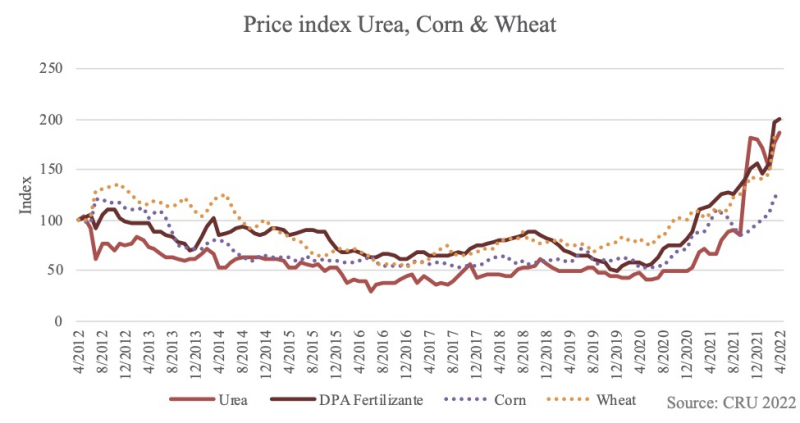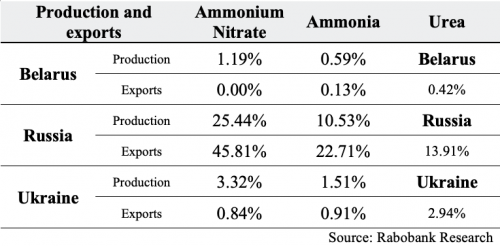The Molotov cocktail of hunger: inflation, shortages, climate crisis and war
- blog de bacosta
- 3652 lecturas
Drought, climate crisis, fertilizer shortages and war threaten world food security and inflation, the Molotov cocktail fuse of hunger burns. The special military operation between Russia and Ukraine has reinforced the points identified by the Food and Agriculture Organization (FAO) as the sources of the food crisis. According to FAO, 193 million people in 53 countries will face a food crisis in 2021 due to three factors:
- Conflicts and wars - mainly in African countries
- Extreme weather changes - due to climate change
- Economic shocks - due to inflation and the COVID-19 pandemic (link)
The invasion of Ukraine by the Russian giant encompasses the first and third reasons. However, there is a direct link between climate change and fossil fuels, considering that Russia is one of the world's largest oil and natural gas producers. In other words, the issue of climate change also has to do with Russia being a major oil and gas producer.
The climatic and economic problems aggravating the food crisis come from long before the outbreak of the war. In the region, droughts reported in the western U.S., Mexico, Argentina and Brazil affected crops and critical export products such as soybeans. The destruction of 200,000 hectares of crops resulting from the impact of hurricanes ETA and IOTA in Nicaragua, Honduras, Guatemala and El Salvador at the end of 2020 confronted the population in their food security(link). FAO identifies Central America as the Latin American region with the highest levels of food insecurity. 12.76 million people in 5 countries were affected .
Inflation during and throughout the pandemic plays a determining role. The FAO price index reached 159 points in April 2020, the highest recorded since 1990. However, the oil price index has surpassed any previous record. In two months since the start of the special military operation, it reached the 250 pts barrier, 90 pts above the overall FAO index.
The war revealed that Russia and Ukraine are the breadbaskets of the world. Plant food production, a complementary industry to the food industry, could not be less important. According to the North American Green Market, the record price of fertilizers in the U.S. market was 15 years ago. At the beginning of the conflict, that record broke as those prices increased by 16%, and urea became 22% more expensive. Both food and fertilizer prices connect. (Graph 1).

There are three main types of plant foods: phosphorus-based, potassium-based and nitrogen-based. Urea, made from nitrogen, is the most popular worldwide. Of the nitrogen components, Russia accounts for 45% of world exports of ammonium nitrate, 27% of ammonium, and 14% of urea (Figure 2). The latter is the most widely used in Latin America to produce rice, corn, papa, wheat, sugar cane, etc.

Latin America is experiencing first-hand the problems of these international markets. The region has a negative balance in production capacity compared to consumption. The most dependent are Brazil and Peru. In the first case, 85% of its demand comes from abroad, and imports from Russia alone account for 62% of the total. In Peru, on the other hand, 70% of plant foods come from Russia. By the end of April 2022, a deficit of 180 thousand tons.
The increase in their prices aggravates the dependence on plant foods. In Colombia, prices have increased threefold, leaving small farmers out of reach. Peru, for its part, seeks to substitute Russia with other sources. Sixty thousand tons come now from Algeria and Indonesia.
Drought, climate crisis, fertilizer shortages and war threaten world food security and inflation; the Molotov cocktail fuse of hunger is burning. As the special military operation continues, it is not clear whether classical monetary theory will control inflation nor whether it will solve the problem of hunger.
Download / Español